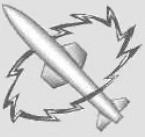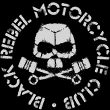juliet7bravo
Posts: 894
Joined: 5/30/2001
Status: offline

|
Mark Parillo...1-55750-677-9
"Additionally, if you have other information on special situations regardign transport of men, fuel, supplies, or planes that would be outside of normal expectations, that data would also be useful to 2by3."
Items for consideration;
-Proper use/behavior of Japanese barges.
-Inclusion of Japanese Sea trucks, coasters, and other small transports, which formed a key part of the Japanese logistics structure.
-Higher troop capacity for Japanese ships, but with an increased negative impact on morale and combat effectiveness due to conditions in transit.
-Lower supply requirements for Japanese troops, to reflect less mechanization and lower tech.
-The use of both equipment (cranes, crane barges ect.) and special cargo units to modify unloading times for both the Japanese and US. US should have a lower base unloading rate due to better planning, cargo stowage, and ship design/cargo handling equipment from the start, and this rate should be modified upward in late '42 to reflect "lessons learned"...the Japanese didn't learn so theirs should remain constant. These base load/unload rates should then be modified by the use of the cargo units/equipment. A non-sexy yet highly important area for consideration.
-Japanese resource availability and shipbuilding capacity (US effectively a moot point) affecting the production of new ships. The mass production of "standard design" ships (with all their shortcomings) should be included and balanced against the construction of more capable non-standard designs. Standard designs would use less resources and shipbuilding points, yet suffer from reduced cargo capacity, lower durability, and increased rate of systems damage.
-Ports in the Greater Co-prosperity Sphere should have a separate shipbuilding/repair capacity for wood hulled coasters and barges.
-Revert to the PW idea of separate "cargo" and "transport" TF's. Cargo TF's should carry a full load of troops/supplies, and load/unload more slowly. Transport TF's should carry fewer troops/supplies, yet load/unload much faster to reflect "combat loading".
-Parachute supply drops. Base/units on ground should receive 50-75% of supplies dropped. If enemy unit present in the same hex, should be a random chance that they will receive some of the dropped supplies.
-Troops carried by Fast transport or Evac TF's should "lose" all heavy equipment.
-AO/TK's unload much to slowly in UV. Fuel transfer rates/pump capacities are easily found in the ships spec sheets.
-Allow AP/AK to carry 50/50 mix of fuel/supplies
-Overland supply, with different supply movement rates for trails, roads, and railroads.
-The ability to build trails, roads, and railroads.
If we're going to bean count, let's bean count;
-Gasoline tracked separate from general supplies or fuel oil. Gasoline would be used by AC, PT boats, all units with vehicles/mech equipment/tanks would require gas.
-Naval stores tracked separate from general supplies. Naval stores would be required to resupply torps, mines, DC's, main gun ammo, and to repair ships.
-Limits to stored fuel oil, gas storage, and naval stores at bases/AF's based on the base/AF size.
-Limits to the number of troops a base of a given size can support at full combat effectiveness, morale, or fort levels.
|
 Printable Version
Printable Version
















 New Messages
New Messages No New Messages
No New Messages Hot Topic w/ New Messages
Hot Topic w/ New Messages Hot Topic w/o New Messages
Hot Topic w/o New Messages Locked w/ New Messages
Locked w/ New Messages Locked w/o New Messages
Locked w/o New Messages Post New Thread
Post New Thread